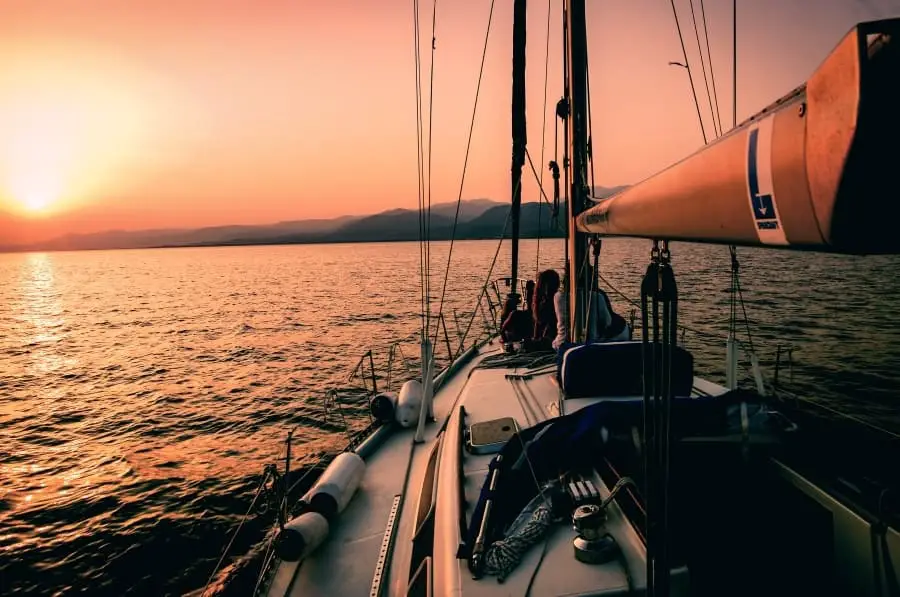When I first learned how to sail, I couldn’t for the life of me remember all of the different terminology involved with sailing.
There are definitely a lot of different terms to memorize and they’re all important. In my opinion, one of the best ways to start improving your sailing vocabulary and general knowledge is to learn about the main parts of a sailboat.
So what are the main parts of a sailboat? The main parts of a sailboat include the hull, wheel/tiller, rudder, keel, mainsail, jib/headsail, mast, and boom. While there are many other important parts of a sailboat, these are the main parts that serve specific purposes that are vital for successfully operating a sailboat.
Learning about the main parts of a sailboat is going to allow you to better communicate with your skipper and fellow crew members when things need to get done.
Along with improving the communication among your team, it helps create a stronger bond between you and everyone else since you’ll all be on the same level of understanding.
On top of that, you get to learn more about one of the most exciting outdoor activities in the world!
Main Parts of a Sailboat
There are many different parts of a sailboat that serve specific purposes when out on the water, but there are several main parts that every captain and crew should be knowledgable in.
If you learn these eight main parts of a sailboat, you’ll have a strong foundation for the many other important parts of a sailboat.
Hull
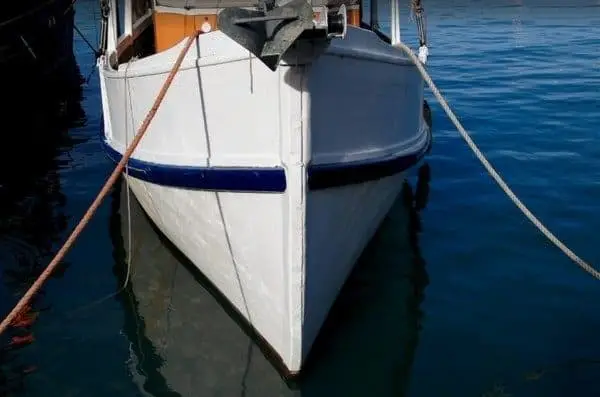
One of the most important parts of a sailboat is the hull, which is the outer shell of the sailboat that’s directly in contact with the water.
The hull is important because it serves as a protective shell for all the internal components of a sailboat by keeping water out. This means a hull needs to not only be water resistant but strong enough to withstand beatings from other environmental elements.
The hull of a sailboat is always symmetrical and also helps properly channel the water it’s in contact with. This ensures that the sailboat is well balanced and reduces the drag well-enough to keep the sailboat moving along safely.
Sailboats have what are called displacement hulls, which require less power resulting in a longer cruising range and increased load carrying ability.
Wheel/Tiller
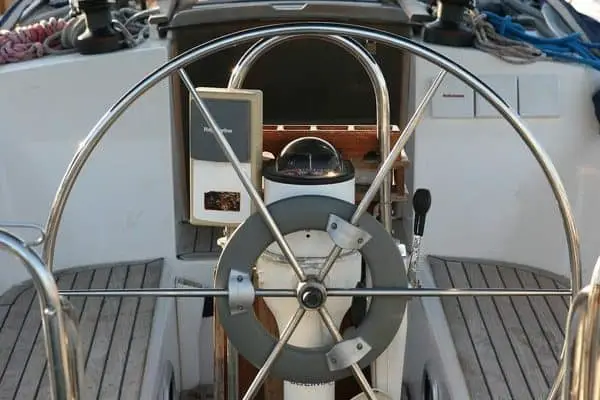
You might have already suspected that being able to steer a sailboat’s rather important, thus the inclusion of the wheel or tiller of a sailboat.
A wheel is most commonly found on sailboats while a tiller is often found on a dingy or rigid-inflatable boat (RIB). You’ll find either of these parts inside the hull at the stern, or back of the sailboat.
Both the wheel and tiller are directly attached to the rudder of the sailboat, which, as you might have suspected, controls the direction in which the sailboat goes.
It’s definitely the case when sailing that there’s a slight delay between moving the wheel or tiller and the boat actually making the directional change.
Rudder
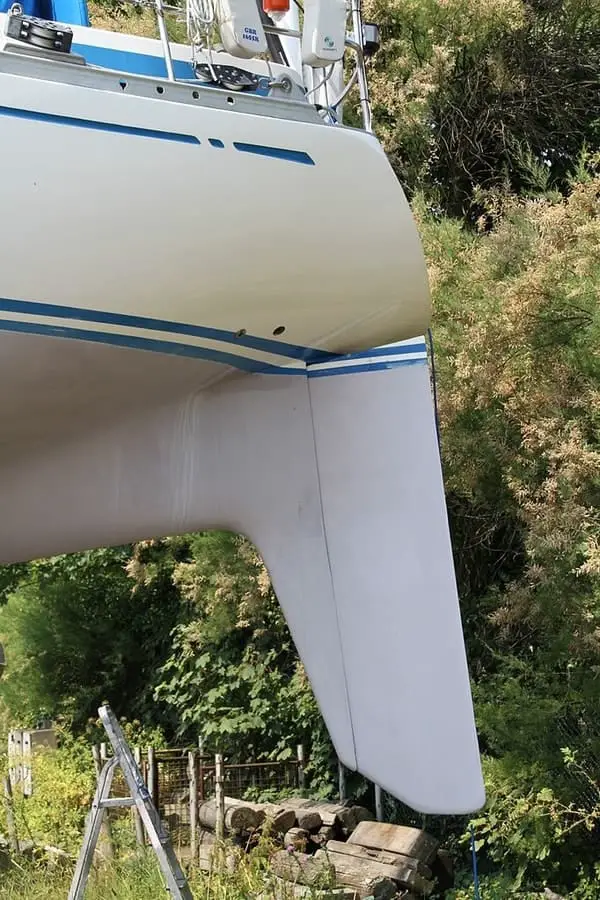
That piece of the sailboat that’s directly connected to the wheel or tiller is the rudder, which is the main part of a sailboat that controls the direction the sailboat will move.
The rudder sits underneath the stern directly in the water and acts as the “tire” of your sailboat. An automobile analogy to the wheel/tiller can be your car’s steering wheel and the rudder your car’s tire.
There are several types of rudders when looking at sailboats including the spade rudder, skeg rudder, and transom hung rudder. These different types of rudders serve different purposes and usually affect the type of keel as well as the shape of the hull.
The skeg rudder is the most common type of rudder nowadays due to it’s improved speed performance and thus more efficient.
Keel
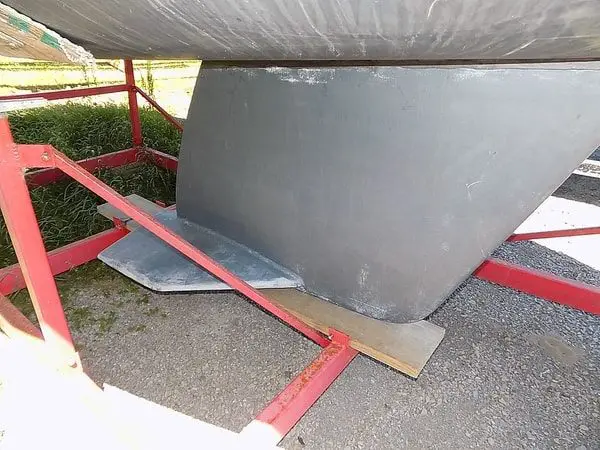
One of the most important main parts of a sailboat is the keel, which is a long plank that sticks out of the bottom of the sailboat’s hull. Think of it like a shark fin but underneath the shark.
The main job of a keel is to make sure that the correct balancing force underwater is kept so that the boat doesn’t tip over.
Apart from it providing a proper balance of the sailboat, the keel is also responsible for converting the sideways or angled wind captured by the sails into forward motion.
This also produces a lift effect which is why as the wind picks up the hull of the sailboat starts coming out of the water resulting in the sailboat increasing in speed.
Mainsail
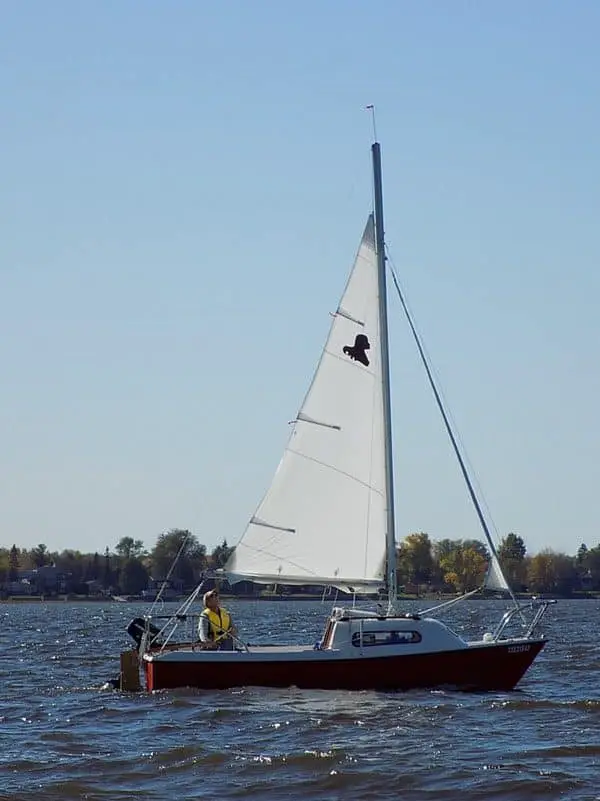
What’s a sailboat without some good wind in our sails? This probably should be on top of the list, but better late than never to mention the mainsail as being a main part of a sailboat.
The mainsail has the job of capturing the coming winds and translate that into forward propulsion. Similar to the wheel/tiller and rudder automobile analogies, you can think of the mainsail as your sailboat’s “engine”.
The mainsail is a tall, vertical heavy-duty fabric that’s held up by the mast and “pulled out” by the boom.
Being able to properly trim a sail allows you to capture the wind more efficiently and sail along more smoothly. Honestly, it’s very easy to dive into the specific parts of a mainsail itself since it’s such an important main part of a sailboat.
Headsail/Jib

The headsail, or jib, is another main part of a sailboat that provides further forward propulsion support along with the mainsail, but is generally smaller and placed at the front of the sailboat.
If you’re sailing along and the force of the wind starts to get rather intense, it’s quite common to trim the mainsail completely and solely rely on the headsail.
The headsail, being smaller than the mainsail, provides less power to the forward movement of a sailboat mainly due to it’s smaller surface area.
However, there are different types of headsails, like the Genoa jib, that are huge and are able to capture a massive amount of wind. There are also spinnakers which are commonly used on racing yachts for downwind sailing.
Mast
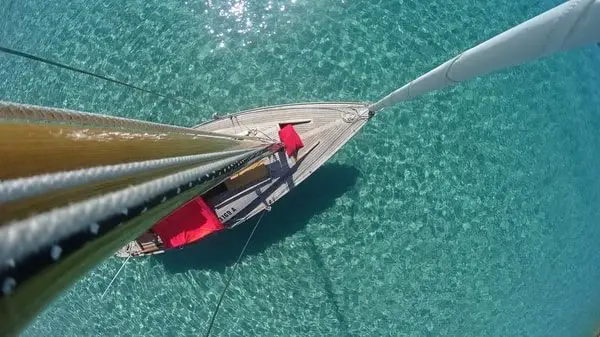
Have you ever wondered what that massive vertical pole was that sits in the middle of a sailboat?
Well, that’s the mast and is an important main part of a sailboat since it holds both the mainsail and headsail in place.
As you can imagine, the mast has to be particularly strong since it has to resist an immense amount of force produced by the wind hitting both sails.
Most sailboats have a single mast that holds both the mainsail and the headsail, but there are larger sailboats that have more than one mast to support a number of sails.
The mast is securely attached to the sailboat and can be seen going through the sailboat by a quick visit of the companionway, or cabin.
Boom
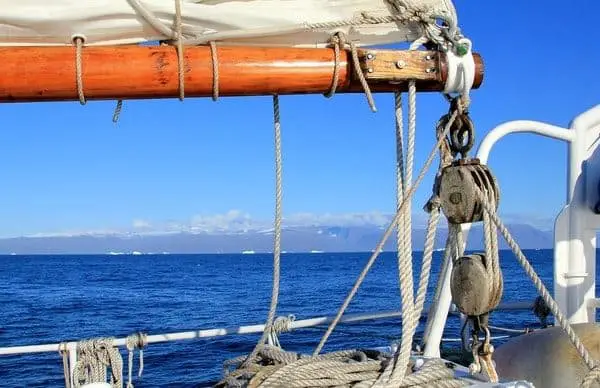
When you go out sailing, you know one of the most important facts to keep in mind is where that darn boom is located and if it’s going to give a good swing when tacking or jibing.
The boom is the horizontal spar directly connected to the mast and the mainsail, and controls the angle at which the mainsail is oriented.
The boom is rotated horizontally so that the mainsail is able to capture the optimal amount of wind depending on the chosen point of sail. Since wind can change at the drop of a hat, it’s common to adjust the boom to ensure the mainsail is shaped well-enough to properly capture the wind.
Other Important Parts of a Sailboat
It’s important that we covered the main parts of a sailboat in the previous sections since it helps to form an important foundation for any crew member.
However, there are a lot of other parts of a sailboat that are also important and serve important functions when out on the water.
Cockpit
The cockpit serves two purposes: it’s where the captain or crew member stands while steering the sailboat and it’s also where water that’s got inside the boat gets drained.
This is a good location to get a good view of the whole sailboat as well as the direction its moving.
Sheets
The sheets of a sailboat are simply ropes used throughout the sailboat. Sheets are used in a number of scenarios, including trimming the sails, positioning the boom, and more.
Bow
The bow is simply the front part of a sailboat, which is where the headsail and anchor are also situated. It’s also often a nice location to lay or sit down when cruising along.
Stern
The stern is simply the back part of a sailboat, which is where the cockpit is located. If you’re sailing with a group of people, this is often the location where most people hang out, chat, and relax.
Pulpit
A pulpit is a metal frame protruding from the bow and stern of a sailboat that provides support to crew members when at either the bow or stern of the sailboat. The stern pulpits are often the “best seats in the house” when cruising along on a sailboat.
Stanchions
Stanchions are the vertical metal uprights surrounding the sailboat that hold up a protective rail to prevent anyone from falling overboard. They essentially provide the necessary support when grabbing onto the protective rails.
Companionway
The companionway is the stairway that leads from the deck down to the saloon. Washboards are commonly used to keep water from entering the saloon through the companionway.
Saloon
The saloon, or cabin, is where the companionway leads to from the deck, which is considered the “living room” of the sailboat. It’s a great place to sit, play cards, eat meals, watch TV, and have a few late night drinks.

